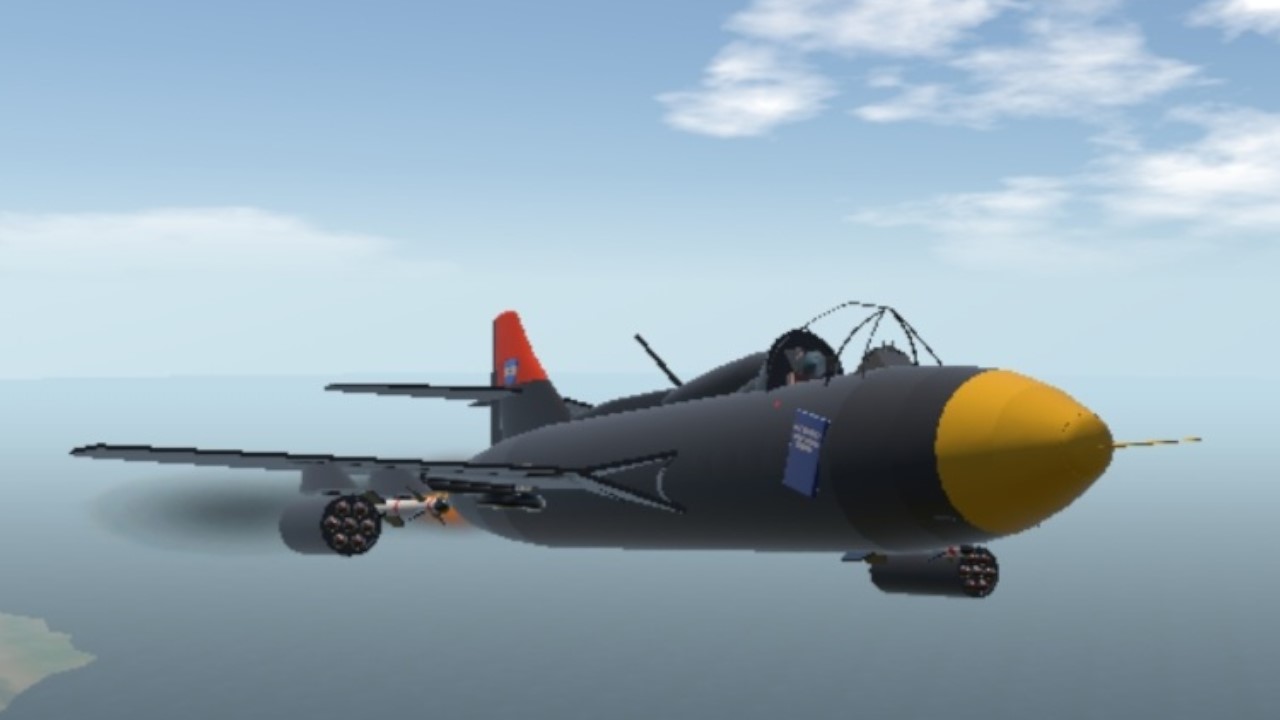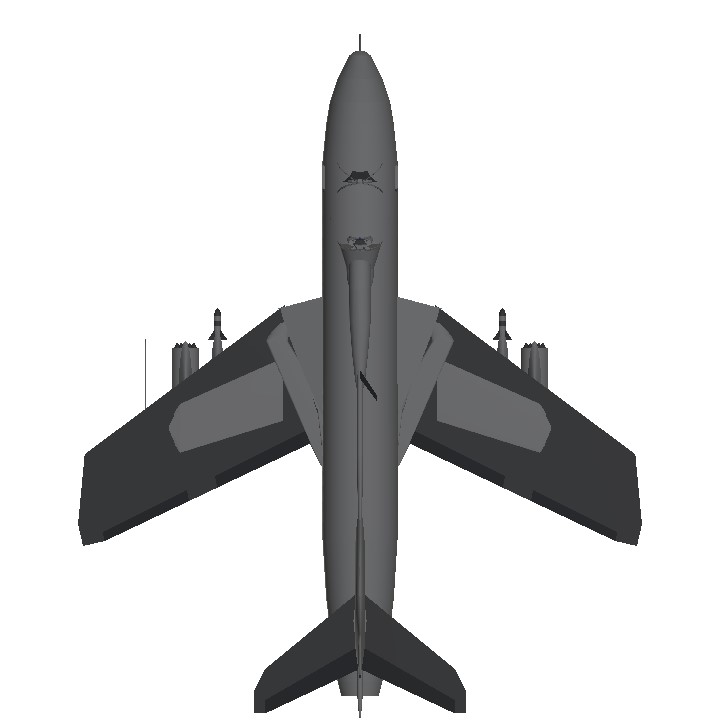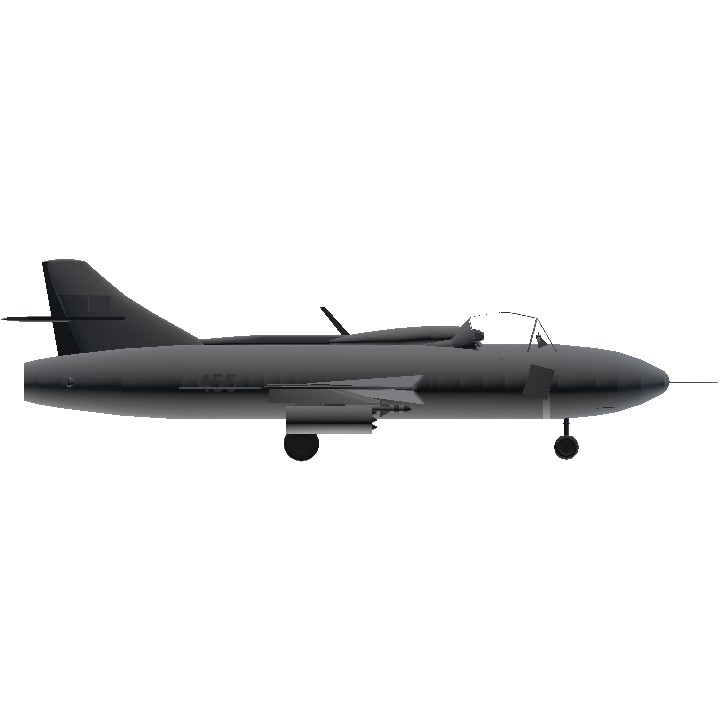The Hawker Hunter is a transonic British jet-powered fighter aircraft that was developed by Hawker Aircraft for the Royal Air Force during the late 1940s and early 1950s.
The single-seat Hunter was introduced to service in 1954 as a manoeuvrable day interceptor aircraft, quickly succeeding first-generation jet fighters in RAF service such as the Gloster Meteor and the de Havilland Venom. The all-weather/night fighter role was filled by the Gloster Javelin. Successively improved variants of the type were produced, adopting increasingly more capable engine models and expanding its fuel capacity amongst other modifications being implemented. Hunters were also used by two RAF display teams: the "Black Arrows", who on one occasion looped a record-breaking 22 Hunters in formation, and later the "Blue Diamonds", who flew 16 aircraft. The Hunter was also widely exported, serving with a total of 21 overseas air forces.
During the 1960s, following the introduction of the supersonic English Electric Lightning in the interceptor role, the Hunter transitioned to being operated as a fighter-bomber and for aerial reconnaissance missions, using dedicated variants for these purposes. Two-seat variants remained in use for training and secondary roles with the RAF and the Royal Navy until the early 1990s. Sixty years after its original introduction it was still in active service, being operated by the Lebanese Air Force until 2014.
The Hunter saw combat service in a range of conflicts with several operators, including the Suez Crisis, the Aden Emergency, the Sino-Indian War, the Indo-Pakistani War of 1965, the Indo-Pakistani War of 1971, the Rhodesian Bush War, the Second Congo War, the Six-Day War, the War of Attrition and the Yom Kippur War. Overall, 1,972 Hunters were manufactured by Hawker Aircraft and its successor, Hawker Siddeley, as well as being produced under licence overseas. In British service, the Hunter was replaced in its principal roles by the Lightning, the Hawker Siddeley Harrier and the McDonnell Douglas F-4 Phantom II.

RAF Hunters of the Black Arrows performing aerobatics at Farnborough Airshow, 1960
During 1945, the Second World War came to a close and a new postwar Labour government, headed by Clement Attlee, came to power in Britain. The incoming Attlee government's initial stance on defence was that no major conflict would occur for at least a decade, and thus there would be no need to develop or to procure any new aircraft until 1957. In accordance with this policy, aside from a small number of exceptions such as what would become the Hawker Sea Hawk for the Royal Navy, the majority of Specifications issued by the Air Ministry for fighter-sized aircraft during the late 1940s were restricted to research purposes. Aviation author Derek Wood describes this policy as being: "a fatal error of judgement which was to cost Britain a complete generation of fighters and heavy bomber aircraft".
As the Cold War arose in the late 1940s, the RAF came to recognise that it would urgently require the development and procurement of fighters equipped with features such as swept wings. By this time, it had also become apparent that newly developed jet propulsion would form the future of fighter aircraft development. Many companies were quick to devise their own designs to harness this means of propulsion. Hawker Aviation's chief designer, Sydney Camm, had proposed the Hawker P.1040 for the RAF, but the demonstrator failed to interest them. Further modifications to the basic design resulted in the Hawker Sea Hawk carrier-based fighter. However, the Sea Hawk possessed a straight wing and was powered by the Rolls-Royce Nene turbojet engine, both features that rapidly became obsolete.
Seeking better performance and fulfilment of the Air Ministry Specification E.38/46, Sydney Camm designed the Hawker P.1052, which was essentially a Sea Hawk outfitted with a 35-degree swept wing. Performing its first flight in 1948, the P.1052 demonstrated good performance and conducted several carrier trials, but was ultimately determined to not warrant further development into a production aircraft. As a private venture, Hawker proceeded to convert the second P.1052 prototype into the Hawker P.1081 with swept tailplanes, a revised fuselage, and a single jet exhaust at the rear. On 19 June 1950, the P.1081 conducted its maiden flight, and was promising enough to draw interest from the Royal Australian Air Force (RAAF); however, further development was stalled by difficulties with the engine's reheat. In 1951, the sole P.1081 prototype was lost in a crash.
THE P.1067
And Its Hence In The Argentina Air Force Conflict
ENJOY YOUR FLIGHT!!
Peace
Specifications
General Characteristics
- Created On Android
- Wingspan 82.7ft (25.2m)
- Length 106.0ft (32.3m)
- Height 29.8ft (9.1m)
- Empty Weight 28,666lbs (13,002kg)
- Loaded Weight 57,292lbs (25,987kg)
Performance
- Power/Weight Ratio 2.264
- Wing Loading 37.7lbs/ft2 (184.2kg/m2)
- Wing Area 1,518.9ft2 (141.1m2)
- Drag Points 19786
Parts
- Number of Parts 236
- Control Surfaces 7
- Performance Cost 991




